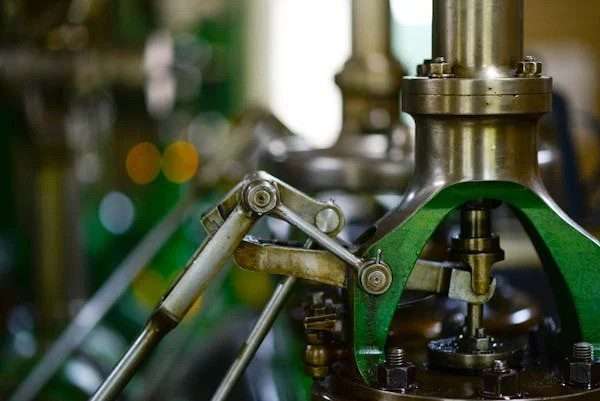In today’s rapidly evolving industrial landscape, sustainable manufacturing has emerged as a pivotal concept, guiding companies towards environmentally conscious and socially responsible practices. As businesses strive to minimize their ecological footprint while maximizing efficiency and profitability, understanding the essential elements of sustainable manufacturing becomes paramount. This article delves into six key factors that serve as the blueprint for achieving sustainable manufacturing excellence.
Environmental Management Systems (EMS)
Implementing robust Environmental Management Systems (EMS) lays the foundation for sustainable manufacturing. By integrating environmental considerations into daily operations, companies can identify areas for improvement, track progress, and comply with regulations. From reducing energy consumption to minimizing waste generation, an effective EMS ensures that environmental sustainability remains at the forefront of decision-making processes. Moreover, a well-designed EMS provides a framework for setting and achieving sustainability goals, fostering a culture of environmental stewardship throughout the organization. By establishing clear policies, procedures, and performance metrics, companies can continuously improve their environmental performance and demonstrate their commitment to sustainable practices to stakeholders.
Resource Efficiency and Circular Economy
Adopting resource-efficient practices and embracing the principles of the circular economy are central to sustainable manufacturing. By optimizing resource utilization, minimizing waste, and promoting recycling and reuse, companies can minimize their environmental impact while enhancing economic resilience. Embracing a circular approach to product design, production, and consumption enables businesses to create value from waste streams, fostering a more sustainable and resilient supply chain. Moreover, incorporating circular economy principles into business models can lead to cost savings, innovation opportunities, and competitive advantages. By closing the loop on material flows and extending product lifecycles, companies can reduce dependency on finite resources and mitigate environmental risks associated with resource depletion and waste generation.
Clean Energy Adoption
Transitioning towards clean energy sources is a critical component of sustainable manufacturing strategies. By investing in renewable energy technologies such as solar, wind, and hydroelectric power, companies can reduce their reliance on fossil fuels, lower greenhouse gas emissions, and mitigate climate change risks. Embracing clean energy not only contributes to environmental sustainability but also enhances energy security and reduces operational costs over the long term. Moreover, integrating renewable energy systems into manufacturing facilities can provide opportunities for energy independence and resilience, especially in regions prone to energy supply disruptions or price volatility. By leveraging innovative financing mechanisms and government incentives, companies can accelerate the adoption of clean energy technologies and reap the benefits of a low-carbon transition.
Supply Chain Transparency and Collaboration
Ensuring transparency and collaboration across the supply chain is essential for advancing sustainable manufacturing goals. By engaging suppliers, partners, and stakeholders in dialogue and collaboration, companies can identify sustainability risks and opportunities, implement ethical sourcing practices, and drive positive social and environmental impacts throughout the value chain. Transparent supply chains enable informed decision-making and foster trust among stakeholders. Moreover, collaboration with suppliers can lead to innovation, efficiency gains, and cost savings. By sharing best practices, technology solutions, and expertise, companies can collectively address complex sustainability challenges and create shared value for all stakeholders.
Innovation and Technology Integration
Harnessing innovation and integrating advanced technologies are key drivers of sustainable manufacturing innovation. From automation and data analytics to additive manufacturing and a versatile stainless steel manufacturing process, leveraging cutting-edge technologies enables companies to optimize processes, reduce resource consumption, and enhance product performance while minimizing environmental impacts. Embracing innovation fosters a culture of continuous improvement and positions businesses for long-term success in a rapidly changing world. Moreover, investing in research and development (R&D) initiatives can lead to breakthrough innovations that transform traditional manufacturing practices and unlock new opportunities for sustainable growth. By fostering a culture of experimentation, risk-taking, and collaboration, companies can stay ahead of the curve and drive meaningful change in the industry.
Stakeholder Engagement and Corporate Responsibility
Engaging with stakeholders and embracing corporate responsibility are fundamental pillars of sustainable manufacturing. By listening to the needs and expectations of customers, employees, communities, and investors, companies can build trust, enhance brand reputation, and drive positive social and environmental outcomes. Embracing corporate responsibility involves transparent communication, ethical business practices, and active participation in initiatives that benefit society and the planet. Moreover, engaging stakeholders in decision-making processes can lead to better outcomes and foster a sense of ownership and accountability. By aligning business objectives with societal needs and expectations, companies can create shared value and contribute to the well-being of communities and ecosystems.
Achieving sustainable manufacturing requires a holistic approach that addresses environmental, social, and economic dimensions. By prioritizing factors such as environmental management systems, resource efficiency, clean energy adoption, supply chain transparency, innovation, and stakeholder engagement, companies can unlock the full potential of sustainable manufacturing. Embracing sustainability not only mitigates risks and enhances resilience but also fosters innovation, drives competitive advantage, and creates long-term value for businesses and society as a whole. As the world transitions towards a more sustainable future, sustainable manufacturing stands as a beacon of hope, guiding companies towards responsible and prosperous pathways.

As the editor of the blog, She curate insightful content that sparks curiosity and fosters learning. With a passion for storytelling and a keen eye for detail, she strive to bring diverse perspectives and engaging narratives to readers, ensuring every piece informs, inspires, and enriches.










